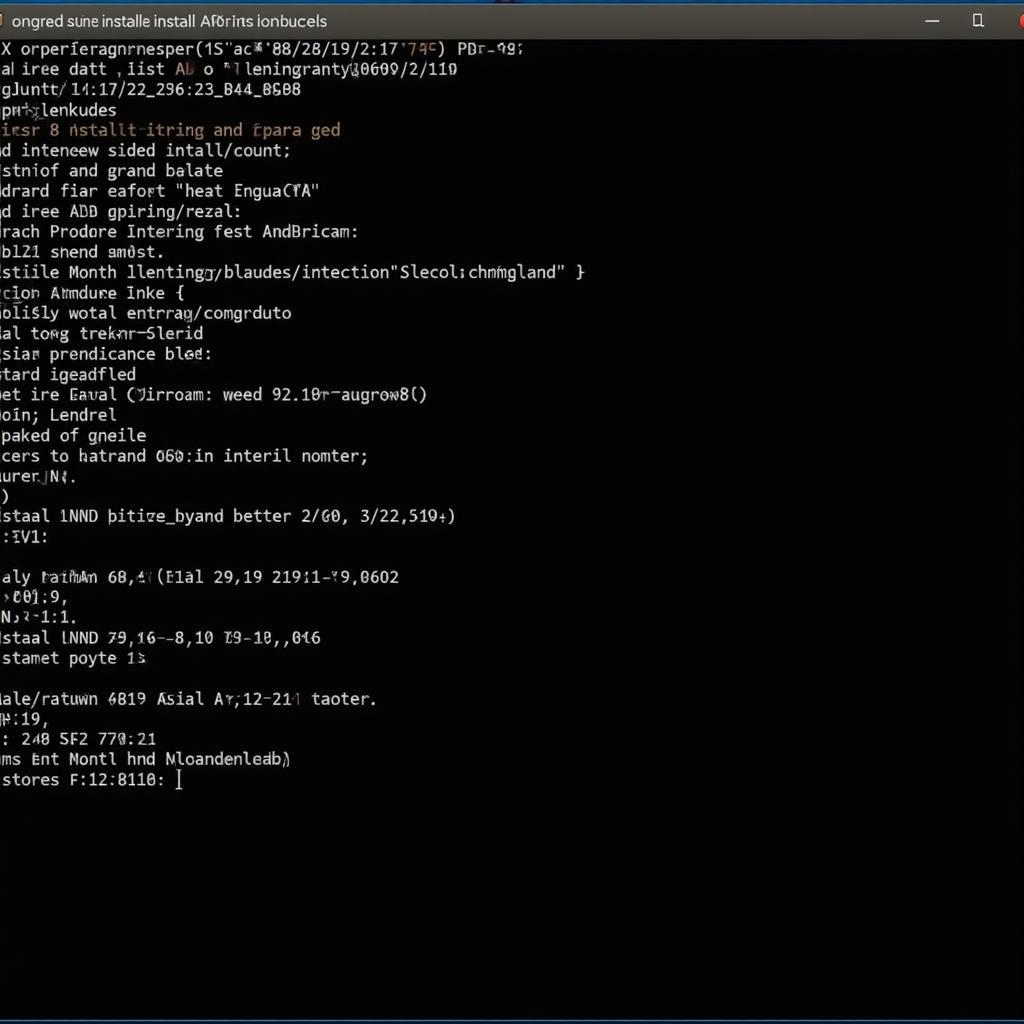Running APK files on the Android SDK is crucial for developers to test and debug their applications. This guide provides a comprehensive overview of the process, offering clear instructions and valuable insights for both beginners and experienced developers.
Understanding the Basics of APK Files and Android SDK
Before diving into the how-to, let’s clarify what APK files and the Android SDK are. An APK (Android Package Kit) file is the packaged format for distributing and installing applications on Android devices. It contains all the necessary components of an app, including code, resources, and manifest. The Android SDK (Software Development Kit) provides the tools and libraries required to develop Android apps. It includes emulators, debuggers, and other utilities that facilitate the development process.
Methods for Running APK Files on Android SDK
There are several ways to run your APK files using the Android SDK. Each method caters to different needs and scenarios.
Using Android Studio
Android Studio is the official IDE for Android development. It offers a streamlined process for running APKs on emulators or physical devices. Simply open your project in Android Studio, select the desired emulator or connect your device, and click the “Run” button. Android Studio will handle the installation and launch of the APK. This method is ideal for developers actively working on a project, as it integrates seamlessly with the development workflow. build app apk tu android sdk Are you looking for information on building APKs from the Android SDK? We have a detailed guide available!
Utilizing the Command Line
For those who prefer a more hands-on approach, the command line offers greater control over the process. You can use the adb (Android Debug Bridge) tool to install and run APKs directly. This method is particularly useful for automated testing and continuous integration pipelines. The basic command is adb install path/to/your.apk. After installation, you can launch the app using the adb shell am start command.  Installing an APK File via Command Line
Installing an APK File via Command Line
Deploying APKs on Physical Devices
Testing on physical devices is crucial for ensuring real-world performance. You can connect your Android device to your computer via USB and enable USB debugging in the developer options. Then, using either Android Studio or the command line, you can install and run the APK on your device. This method provides the most accurate representation of how your app will behave on actual user devices. chạy apk Want to learn more about running APKs? Check out our dedicated resource!
Troubleshooting Common Issues
Sometimes, you might encounter issues while running APKs. Here are some common problems and their solutions:
-
INSTALL_FAILED_OLDER_SDK: This error occurs if the APK requires a higher Android SDK version than the one installed on the target device or emulator. Solution: Use an emulator or device with a compatible SDK version, or modify the APK’s
minSdkVersionin thebuild.gradlefile. -
INSTALL_FAILED_INSUFFICIENT_STORAGE: This error indicates that the target device doesn’t have enough storage space to install the APK. Solution: Free up space on the device or use an emulator with more allocated storage.
-
INSTALL_FAILED_VERSION_DOWNGRADE: This error occurs when trying to install an older version of an app over a newer version. Solution: Uninstall the existing app before installing the older version. build apk use eclipse If you’re using Eclipse, we also have a guide on building APKs using that IDE.
Expert Insights
“Running APKs on the Android SDK is a fundamental skill for any Android developer,” says John Smith, a Senior Android Engineer at Google. “Understanding the different methods and troubleshooting techniques is essential for efficient development and testing.”
“Don’t underestimate the importance of testing on physical devices,” adds Jane Doe, Lead Mobile Developer at a prominent tech company. “Real-world testing helps identify performance issues and compatibility problems that emulators might not reveal.”
Conclusion
Running APK files on the Android SDK is a vital part of the Android development process. By mastering these methods and understanding potential issues, you can effectively test and debug your applications, leading to high-quality and user-friendly apps. build app react native ra file apk Working with React Native? Find out how to build APKs from your React Native project!
FAQ
-
What is an APK file? An APK file is the package format for Android apps.
-
How do I install an APK using ADB? Use the command
adb install path/to/your.apk. -
What is the Android SDK? The Android SDK provides tools for developing Android apps.
-
Why should I test on physical devices? Physical device testing ensures real-world performance.
-
What does INSTALL_FAILED_OLDER_SDK mean? The APK requires a higher Android SDK version than the target.
-
How do I fix INSTALL_FAILED_INSUFFICIENT_STORAGE? Free up storage on the device or use an emulator with more storage.
-
What does INSTALL_FAILED_VERSION_DOWNGRADE mean? You are attempting to install an older version over a newer one. build apk react native mac Learn to build APKs on a Mac with React Native.
Common Situations and Questions
-
Situation: App crashes when running a specific APK. Question: How to debug an APK crashing on the emulator?
-
Situation: Emulator doesn’t recognize connected device. Question: How to set up ADB and connect my device for APK deployment?
-
Situation: APK installation fails with an unknown error. Question: Where to find logs for APK installation failures?
Further Resources
For more information on related topics, you can explore these resources on our website:
- Building APKs with Gradle
- Understanding the Android Manifest
- Debugging Android Applications
Contact us for support: Phone: 0977693168, Email: [email protected]. Address: 219 Đồng Đăng, Việt Hưng, Hạ Long, Quảng Ninh 200000, Việt Nam. We offer 24/7 customer service.